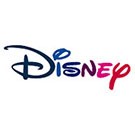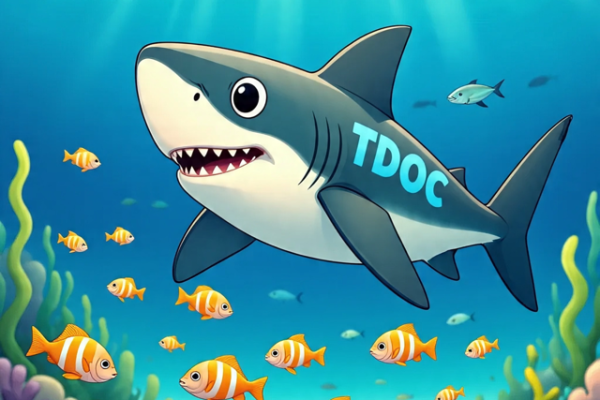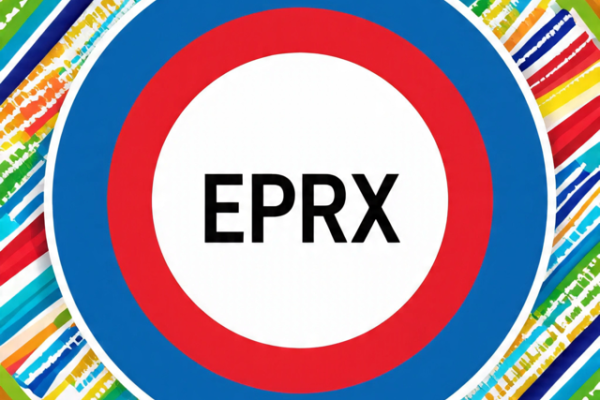Tech Stocks Take A Tumble As Market Plays ‘Whack-a-Mole’ With Investor Hopes – $ADT $CMG $EPRX $NOW $VKTX $TSLA Rise!

TSX and Oil Prices
Canada’s TSX decided to take a nosedive, apparently inspired by oil prices doing their best impression of a slippery slope closed at $78.28/bbl [1]. The market’s decline was exacerbated by falling metal prices, creating a double whammy for investors[1]. Despite the Bank of Canada’s recent rate cut – the second this year – the market seemed unimpressed, leaving observers to wonder if maple syrup-flavored stocks might have fared better[1]. The combination of tumbling commodity prices and lingering uncertainty about future monetary policy created a perfect storm for the TSX, proving that even in the Great White North, market bears can outrun the bulls.
U.S. Markets, GDP, & Yields Diverge…
In a display of market indecision, U.S. stocks played a game of “Green Light, Red Light” on July 25, 2024. After Wednesday’s tech-driven tumble, markets cautiously inched into positive territory before retreating, mirroring the uncertainty among investors. The day’s highlight was the release of second-quarter GDP data, which surprised analysts by coming in at a robust 2.8%, surpassing expectations of 2.1%[1][2]. This stronger-than-anticipated growth left investors pondering the Federal Reserve’s next move, with many questioning whether rate cuts were still on the horizon or if the central bank would maintain its hawkish stance in light of the economy’s resilience[2]. Today, the yield curve diverged again as the 10-yr note yield moved down 3bps to 4.26% and the 2-yr note yield rose 2bps to 4.44%. The market volatility gauge, the “VIX” rose another 2.33% after yesterday’s +22.55% jump closing at $18.46.
Market Indices Performance
The Nasdaq Composite experienced its most significant single-day decline in over four years, plummeting 3.6% to close at 17,342.41. This sharp downturn was mirrored by other major indexes:
- S&P 500 fell .51%, settling at 5,399.22
- Dow Jones Industrial Average rose .20% closing at 39,935.07
- The Nasdaq Composite closed at 17,181.72, down .93%
- Russell 2000, representing smaller companies, popped higher by 1.26% closing at 2,222.98
- The iShares Micro-Cap ETF closed at $127.56, +1.72%.
European Shares and Earnings
Across the pond, European shares decided to join the pity party, tumbling faster than a jenga tower at an earthquake convention. The bearish sentiment was fueled by a series of disappointing corporate earnings reports across various sectors[1]. This lackluster financial performance added to the already pessimistic outlook for European equities, proving that even the Old World isn’t immune to the whims of the global market rollercoaster. Investors were left wondering if they should have invested in artisanal cheese futures instead of traditional stocks.
Corporate Comedy Highlights
In the corporate comedy show, several headliners stole the spotlight. American Airlines cut its profit forecast, presumably after realizing that charging for oxygen masks wasn’t a viable strategy.[1] Apple lost market share in China, proving that even tech giants can stumble when faced with fierce competition from local brands like Huawei.[1] Chipotle, on the other hand, spiced things up by beating quarterly estimates, with comparable sales rising 11.1% in Q2.[1] The burrito maker even announced a $400 million stock buyback, apparently confident that guacamole will never go out of style.
Meanwhile, automakers hit some speed bumps. Ford’s shares tumbled after reporting a dip in Q2 adjusted profit, earning 47 cents per share against expectations of 68 cents.[1] Stellantis also took a nosedive, reporting a 48% year-over-year slump in first-half net profit to 5.65 billion euros.[2] Perhaps they should consider pivoting to manufacturing tricycles or investing in flying car technology to turn their fortunes around.
Sector Performance Highlights
On July 25, 2024, the S&P 500 sectors displayed a mixed performance, reflecting the overall market’s indecision. The real estate sector emerged as a standout performer, with the Real Estate Select Sector SPDR Fund (XLRE) showing significant gains despite a 0.6% dip on Thursday, outpacing the broader S&P 500 index for the month of July. In contrast, the technology sector faced headwinds, with the S&P 500 Info Tech index declining by 1.27%. The energy sector also struggled, likely influenced by falling oil prices. Meanwhile, the consumer discretionary sector showed resilience, buoyed by strong performances from companies like Chipotle, which reported better-than-expected quarterly results. The financial sector exhibited moderate strength, while utilities remained relatively stable, reflecting their defensive nature in uncertain market conditions.
Notable Company Performances As Tech Tumbles
On July 25, 2024, several companies stood out in the stock market with notable performances. ServiceNow (NOW) shares soared 13.4%, reaching a record high and claiming the top daily performance spot among S&P 500 stocks[2]. Chipotle (CMG) shares rose over 3% after reporting better-than-expected quarterly financial results[2]. In contrast, Ford (F) saw its shares tumble after reporting a dip in Q2 adjusted profit, earning 47 cents per share against expectations of 68 cents[5]. American Airlines (AAL) also faced headwinds, with its shares sliding following its earnings report[2]. Tech giants experienced addition wreckage with Meta Platforms (META, $453.41, -1.70%) and Amazon (AMZN, $179.85, .54%), Nvidia (NVDA, %112.28, -1.72%), Apple (AAPL, $217.49, -.48%), Microsoft (MSFT, $418.40, -2.45%), Alphabet (GOOGL, $169.16,-2.99%), while Tesla (TSLA renounced closing at $220.25, +1.97%. Viking Therapeutics (VKTX, $64.68, +28.31%), a biopharmaceutical company known for its innovative approach to metabolic disorders, is making waves in the obesity treatment landscape with its promising GLP-1 agonist VK2735. The company’s recent financial results and pipeline updates reveal significant progress in their obesity-focused clinical trials, showcasing impressive weight loss results and setting the stage for advanced development phases
Economic Data
In today’s episode of “Economic Data: The Reality Show,” Q2 GDP strutted its stuff with a dazzling 2.8% growth rate, blowing past the consensus estimate of 1.9% and leaving Q1’s 1.4% growth in the dust[1][2]. The consumer spending segment didn’t disappoint either, accelerating to 2.3% from 1.5% in Q1, proving that shoppers still have plenty of stamina[1]. Meanwhile, the Weekly Initial Claims took a bow at 235K, sticking close to the script and avoiding any dramatic flair[2]. Continuing Claims also played it cool at 1.851 million, showing no signs of labor market panic[2]. The June Durable Orders, however, decided to throw a curveball, plummeting 6.6% due to a nosedive in nondefense aircraft and parts orders[2]. But don’t worry, business spending in June showed some muscle with a 1.0% increase in new orders for nondefense capital goods excluding aircraft[2]. All in all, it was a day of economic data that kept us on the edge of our seats without tipping us over.
VP Watchlist Updates

Eupraxia Pharmaceuticals (EPRX, $2.80,+8.11%) is a clinical-stage biotechnology company focused on the development of locally delivered, extended-release products that have the potential to address therapeutic areas with high unmet medical need. The Company strives to provide improved patient benefit and has developed technology designed to deliver targeted, long-lasting activity with fewer side effects. DiffuSphere™, a proprietary, polymer-based micro-sphere technology, is designed to facilitate targeted drug delivery, with extended duration of effect, and offers multiple, highly tuneable pharmacokinetic (PK) profiles. This investigational technology can be engineered for use with multiple active pharmaceutical ingredients and delivery methods.
Note that Eupraxia recently completed a Phase 2b clinical trial (SPRINGBOARD) of EP-104IAR for the treatment of pain due to osteoarthritis of the knee. The trial met its primary endpoint and three of the four secondary endpoints. Eupraxia has expanded the EP-104 platform into gastrointestinal disease with the Phase 1b/2a RESOLVE trial for treating EoE. Eupraxia is also developing a pipeline of later- and earlier-stage long-acting formulations. Potential pipeline indications include candidates for other inflammatory joint indications and oncology, each designed to improve on the activity and tolerability of currently approved drugs.
On May 23, Eupraxia announced that regulators in Australia and Canada have cleared the Company’s request to expand its Phase 1b/2a RESOLVE trial, which is evaluating the safety and efficacy of EP-104GI as a treatment for eosinophilic esophagitis (“EoE”). For further details about Eupraxia, please visit the Company’s website at: www.eupraxiapharma.com.
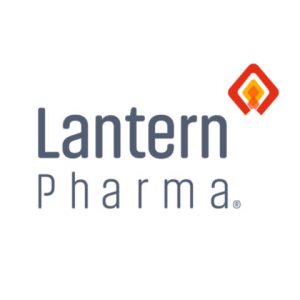
Shares of Lantern (LTRN), an artificial intelligence (“AI”) company developing targeted and transformative cancer therapies using its proprietary RADR® AI and machine learning (“ML”) platform with multiple clinical stage drug program, closed at $4.54, +2.71%.
On July 10, Lantern announced a significant advancement towards the development of a diagnostic for its drug candidate LP-184. The diagnostic is currently based on qRT-PCR (quantitative real-time polymerase chain reaction) technology and is focused on quantifying the amount of PTGR1 RNA in patient tumor samples to assess the potential for sensitivity to Lantern’s drug candidate LP-184. The company plans to further develop and validate the assay for its use as a potential tool for patient selection in later stage clinical trials across a broad range of solid tumors that have shown sensitivity to LP-184. Panna Sharma, CEO of Lantern Pharma stated, “This milestone represents a significant leap forward in our precision oncology approach and in ensuring that we enrich our future LP-184 clinical trials with the patients we believe will be most likely to benefit. By working to develop a companion diagnostic for LP-184, we’re not just advancing a drug candidate; we’re paving the way for more personalized and effective cancer treatments for patients that have the highest likelihood of benefitting from the therapy. The planned use of biomarkers like PTGR1 in our clinical trials exemplifies our commitment to data-driven, patient-centric drug development.”
Panna Sharma, CEO of Lantern, was interviewed recently on the ‘Today In Nashville’, a program hosted by Carole Sullivan and associated with Nashville’s WSMV 4, an NBC affiliate. Watch it here to learn more.
On June 12, Lantern announced that the Japan Patent Office (JPO) has issued a Certificate of Patent for patent application no. 2021-513267 / registration no. 7489966 directed to Lantern Pharma’s drug candidate LP-284 ((+)N-hydroxy-N-(methylacylfulvene)urea). The Certificate of Patent entitled “Illudin Analogs, Uses Thereof, and Methods for Synthesizing the Same” covers molecule LP-284, including claims covering the new molecular entity. A Certificate of Patent is issued after JPO examinations have confirmed the merits of a patent request. Lantern values the broad protection this latest patent provides. Lantern estimates that LP-284 can have the potential to improve outcomes for 40,000 to 80,000 patients with blood cancers annually, with a global annual market potential of $4 Billion USD.

Shares of Indaptus Therapeutics, Inc. (Nasdaq: INDP) closed at $2.03, -3.56% and is up +8.37% at $2.20 in the aftermarket. Indaptus is a company with the ability to harness both the body’s innate and adaptive immune responses, believes that they are uniquely positioned to revolutionize the treatment of cancer and certain infectious diseases. Indaptus Therapeutics has evolved from more than a century of immunotherapy advances. The Company’s novel approach is based on the hypothesis that efficient activation of both innate and adaptive immune cells and pathways and associated anti-tumor and anti-viral immune responses will require a multi-targeted package of immune system-activating signals that can be administered safely intravenously (i.v.). Indaptus’ patented technology is composed of single strains of attenuated and killed, non-pathogenic, Gram-negative bacteria producing a multiple Toll-like receptor (TLR), Nucleotide oligomerization domain (Nod)-like receptor (NLR) and Stimulator of interferon genes (STING) agonist Decoy platform. The products are designed to have reduced i.v. toxicity, but largely uncompromised ability to prime or activate many of the cells and pathways of innate and adaptive immunity. Decoy products represent an antigen-agnostic technology that have produced single-agent activity against metastatic pancreatic and orthotopic colorectal carcinomas, single agent eradication of established antigen-expressing breast carcinoma, as well as combination-mediated eradication of established hepatocellular carcinomas and non-Hodgkin’s lymphomas in standard pre-clinical models, including syngeneic mouse tumors and human tumor xenografts.
On June 4, Indaptus announced that its Chief Medical Officer, Roger Waltzman, M.D., will present an update on the Company’s lead product candidate, Decoy20, at the 7th Annual Next-Gen Immuno-Oncology Conference in Boston on June 20-21, 2024. Dr. Waltzman will present preliminary results from the Company’s ongoing Phase 1 study of Decoy20, an intravenous treatment using killed bacteria designed to broadly stimulate the immune system, in patients with advanced solid tumors.
On June 3, Indaptus announced updated data from its ongoing Phase 1 clinical trial of Decoy20 in patients with solid tumors. The data were featured in a poster presentation at the American Society of Clinical Oncology (ASCO) Annual Meeting on June 1 in Chicago, Illinois.
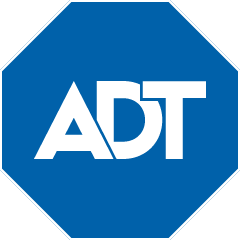

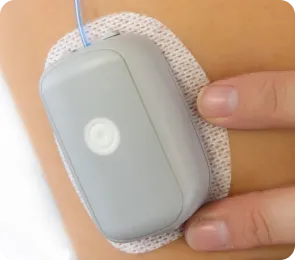
Quote of the Day
Citations
- https://www.theglobeandmail.com/investing/markets/stocks/AAPL/pressreleases/27610033/stock-market-update-analysis-july-25th-2024/
- https://www.investopedia.com/5-things-to-know-before-the-stock-market-opens-july-25-2024-8683358
Economic Reports
On Tuesday, the June Retail Sales 0.0% & June Retail Sales sans-auto .4%, June Import Prices .0%, June Import Prices sans-oil .2%, June Export Prices -.5%, June Export Prices san-agriculture -.6%, May Business Inventories .5%, the July NAHB Housing Market Index came in lower at 42.
On Wednesday, the Weekly MBA Mortgage Applications Index came in at -2.2%, The Advanced June Retail Inventories came in at .7%, The June Advanced Wholesale Inventories report clocked in at .2% , The Preliminary July S&P Global US Manufacturing PMI report came in lower at 49.5, The Preliminary July S&P Global Services PMI report came in higher at 56, & The June New Home Sales report came lower than expected at 617K.
On Thursday, the Q2 GDP strutted its stuff with a dazzling 2.8% growth rate, blowing past the consensus estimate of 1.9% and leaving Q1’s 1.4% growth in the dust. The consumer spending segment didn’t disappoint either, accelerating to 2.3% from 1.5% in Q1, proving that shoppers still have plenty of stamina. Meanwhile, the Weekly Initial Claims took a bow at 235K, sticking close to the script and avoiding any dramatic flair. Continuing Claims also played it cool at 1.851 million, showing no signs of labor market panic[2]. The June Durable Orders, however, decided to throw a curveball, plummeting 6.6% due to a nosedive in nondefense aircraft and parts orders[2]. But don’t worry, business spending in June showed some muscle with a 1.0% increase in new orders for nondefense capital goods excluding aircraft. All in all, it was a day of economic data that kept us on the edge of our seats without tipping us over.
Videos
Post View Count : 501







